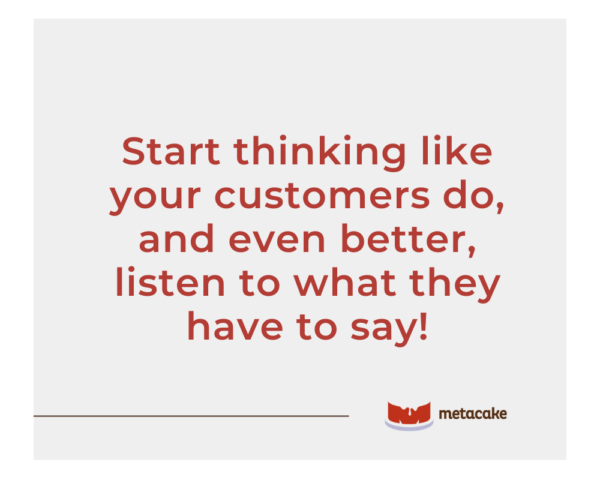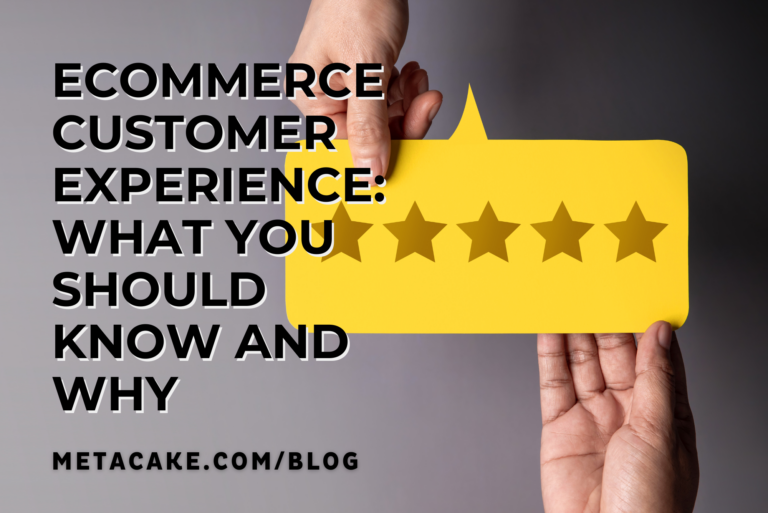Most of us hear customer experience and think of the friendly smile or tone of voice we receive from the cashier at our local grocery store. Or the waitstaff at our favorite restaurant being overly kind and serving up extra refills.
But those are in-person customer experiences. How do you replicate those in an ecommerce customer experience? And should an ecommerce business be concerned about it?
More than ever, customer experience (CX) is generating a lot of buzz. As longtime champions of the importance of customer experience, all we can say is FINALLY!
CMOs and marketing managers are now aware of the concept of CX and have had at least a few people tell them they should care about it.
But still, many are reluctant to invest in ecommerce customer experience.
Why? Let’s find out!
Reasons Behind Ecommerce Customer Experience Neglect
There are two main reasons that CX doesn’t get the attention it deserves.
Lack of Knowledge
Many marketers don’t grasp the benefits of CX or, at the most basic level, what CX is. Don’t worry; we’ll get to it. Read on!
Vague ROI
Even if marketers do understand CX and its benefits, many don’t invest in it because calculating ROI is difficult, making it challenging to defend it to those higher-ups.
First and foremost, if you’re a CMO or marketing manager and have yet to invest in CX, you’re not alone.
But it’s certainly time to come on over to the other camp.
What Is Ecommerce Customer Experience?
Ecommerce customer experience is essentially the same as user experience (UX). Calling it customer experience instead of user experience just makes it more relatable.
When we say “customer experience,” most people can grasp that we’re providing the customer experience. When we say “user experience” or simply “UX,” it sounds technical, cold, and distant.
I’m not sure, as an ecommerce marketing manager, what the UX should be. However, I have a clear concept of the type of customer experience I want to provide.
In a physical retail store, designers would think through what the flow of the store is, where customers go to get information, and how and where they complete the purchase process.
For an ecommerce store, the process of designing the customer experience is exactly the same. You need to ask all of these same questions in order to design an intuitive and pleasing customer experience.
Simply put, customer experience is putting yourself in the shoes of the customer and designing a web experience that makes sense for them from start to finish.
How to Get Started With Ecommerce Customer Experience
Start simple
Start thinking like your customers do, and even better, listen to what they have to say!
You don’t have to start out with focus groups or usability testing. You don’t even have to interact directly with your customers to get the info you need. Begin by watching your current customers as they peruse your site.
Let’s look at some great tools designed to do this.

Use Ecommerce Customer Experience Tools
Google Analytics
Likely, you already have Google Analytics installed. But is it providing you with useful, relevant, and accurate data? Do you know how to read it? With a proper GA install, you can see a user’s path and determine their greatest friction points.
Here are some of the features offered:
- Built-in automation
- Reporting
- Advertising workspace
- Explorations
- Data collection and management
- Integrations
Need help reading your data? Get in touch with us!
Hotjar
Hotjar is a great tool that allows you to record customers’ mouse movements and clicks as they browse your site as well as view heat maps.
They market themselves as a 5-tools-in-1 platform, with features like:
- Heatmaps
- Recordings
- Surveys
- Feedback
- User interviews
GetSiteControl
This is a cool tool! It’s a widget builder and email marketing platform that allows you to set up pop-up alerts and surveys for your customers to gather feedback. And did we mention that it’s incredibly easy to use?
They provide ecommerce businesses with the tools to:
- Promote special offers
- Prevent cart abandonment
- Conduct surveys
- Collect emails
- Manage contacts
- Build email marketing workflows
- Send email broadcasts
Intercom
Intercom is another tool that allows you to directly interact with your customers and ask for feedback. You can even set up scripted chats to ask specific questions after a visitor takes a certain action.
Here are some key features of Intercom:
- Live chat
- Support bots
- Shared inbox
- Procedure tours
- Intercom builder
Optimizely
Optimizely is our preferred conversion rate optimization and split testing platform. It allows you to easily compare the effectiveness of different site experiences based on customer goal success.
They’ve also been named a Leader in the 2024 Gartner Magic Quadrant for Content Marketing Platforms.
They offer solutions for the following:
- Content management
- Web experimentation
- Feature experimentation
- Content marketing
- Configured commerce
Measure the Impact
While measuring the ROI of ecommerce customer experience is challenging, it’s crucial for success in the digital marketplace. Ecommerce businesses that prioritize customer experience often see a direct impact on their bottom line.
They’ll witness:
- Customer loyalty
- Revenue growth
- Cost reduction
Ecommerce businesses that can properly integrate customer experience metrics with their business goals will see an increase in better decision-making and will have a competitive advantage.
With the tools we’ve listed, and specifically Optimizely, you can measure in terms of dollars and cents how your site is improving as you listen to your customers and make changes based on their feedback.
Ecommerce Customer Experience: Final Thoughts
One final nugget of knowledge regarding ecommerce customer experience (in case you needed one):
It’s free! At least to start. Customer experience is a mindset, so you can get started on CX today without a huge investment.
In the long run, you’ll want a CX professional to lead your experience design, but that doesn’t mean you can’t get started now on your own.
If you need help, we’re just a click away!
